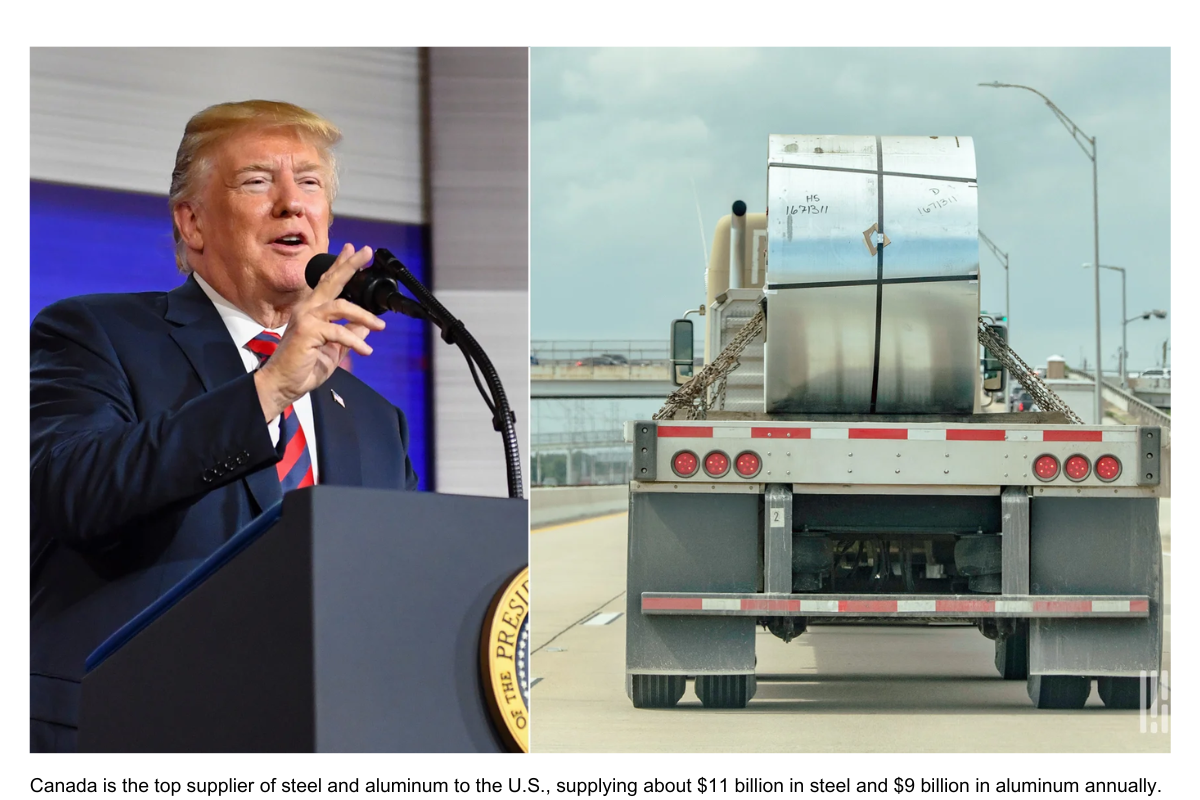President Donald Trump has ordered a 25% tariff on all steel and aluminum entering the U.S. This move expands existing trade barriers and aims to increase domestic production. Canada and other countries have warned of possible retaliation.
“You will see American factories producing more steel again,” Trump said in a statement. The tariff will make imported metals more expensive, affecting industries that rely on them. Some U.S. businesses have raised concerns about rising costs.
The decision targets steel and aluminum imports from all countries. Canada, the largest supplier of these metals to the U.S., has criticized the policy. Other major exporters, including Mexico and the European Union, have also expressed opposition.
Trump argues that the tariff will protect U.S. jobs and industry. The White House said the U.S. steel industry has struggled against foreign competition. Some economists warn that higher prices could hurt manufacturers and consumers.
“The U.S. economy depends on free trade, and this move could cause problems,” said a trade analyst. Companies using steel and aluminum, such as car manufacturers, may see production costs rise. Some firms could pass these costs to consumers.
Canada has called the tariff unfair and is considering countermeasures. Prime Minister Justin Trudeau said his government will defend Canadian workers. The European Union has also warned of possible retaliatory tariffs.
The U.S. imports a large portion of its steel and aluminum from abroad. Last year, Canada supplied about 17% of U.S. steel imports. Mexico, South Korea, and Brazil are also major suppliers.
China, a key global steel producer, has also reacted to the decision. Chinese officials have said they will take steps to protect their interests. The country has previously imposed tariffs on U.S. goods in response to trade disputes.
Trump’s move follows his earlier tariffs on specific steel and aluminum products. The new policy expands restrictions to cover all imports of these metals. It aligns with his broader goal of reducing the U.S. trade deficit.
“You will see more American steelworkers back on the job,” Trump said. The administration has framed the tariffs as part of a national security effort. The U.S. government argues that relying on foreign metals weakens critical industries.
U.S. steelmakers have welcomed the policy, expecting higher profits and increased production. Nucor and U.S. Steel have both supported past tariff measures. Some unions representing steelworkers have also backed the decision.
However, businesses that rely on imported metals see challenges ahead. The auto and aerospace industries could face higher costs for materials. Construction firms may also experience price increases for key supplies.
Opponents say the tariffs could lead to a trade war with key allies. Some lawmakers, including members of Trump’s party, have voiced concerns. They warn that tariffs could result in job losses in industries affected by higher costs.
Canada and the European Union have threatened to impose their own tariffs. Previous trade disputes have led to retaliatory measures on U.S. exports. American farmers and manufacturers could be impacted if trading partners take action.
The global steel market has been under pressure due to overproduction. China, the world’s largest steel producer, has been accused of flooding markets. The U.S. has argued that Chinese subsidies create unfair competition.
Steel and aluminum prices have already risen in response to the announcement. Some analysts predict further increases if other countries take countermeasures. Businesses affected by the tariffs may look for alternative suppliers.
Trump’s economic policies have focused on reducing dependence on foreign goods. His administration has also renegotiated trade deals to favor U.S. industries. The tariffs align with his “America First” agenda on trade.
The decision marks one of the most significant trade actions of his presidency. It remains uncertain how other countries will respond. The full impact on U.S. businesses and consumers will unfold in the coming months.




